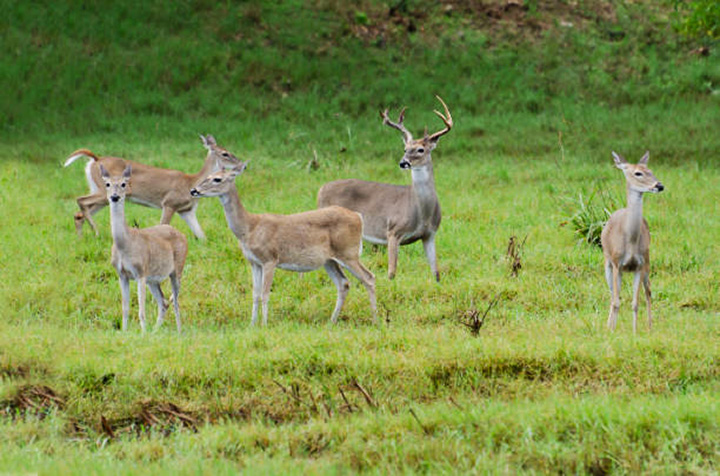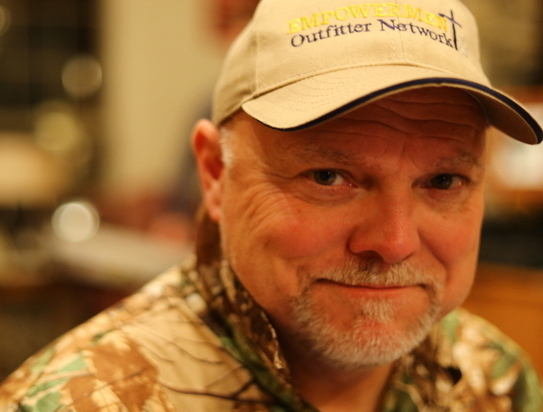Why and How to Bowhunt Whitetail Does
Many readers will be lost by a title that features doe hunting. I know this. Nonetheless, they’re a good opportunity. Hear me out.
There are myriad reasons to shoot does other than for the obvious food value they provide. Sure, many hunters largely pursue big-antlered bucks, but there is still a healthy contingent of whitetailers that seek their female counterparts.
Regardless, harvesting does is a huge part of the deer hunting experience. And for bowhunters, they present a particularly good opportunity.
The Why's
Managing Local herds
There are benefits to working toward a beneficial buck-to-doe ratio. If you value shooting bucks, this one is academic. Creating balance in buck-to-doe ratios will go a long way toward improving hunting during the rut when said bucks more readily show themselves.
Just think about the many trail camera images of does you hurriedly thumb through and ignore. In areas with particularly high deer counts, shooting does can positively impact local herds – even from a health perspective. Of course, you don’t want to overkill your doe population either. Do your best to educate yourself on resident doe numbers on and around your property.
Bigger parcels will often require rifle hunting to effect any real change. Still, taking does is a really good opportunity for bowhunters.
Real Practice
Many bowhunters are so focused on hunting mature bucks that shooting does often gets placed so far back on the shelf that it never happens. I’m lucky to have private grounds that allow me to harvest does early or late in the season. I admittedly still dawdle.
Pounding archery targets is useful but only gets you so far. For one, they never spook when you draw your bow. The fact is, taking an occasional doe with stick and string is a great way to practice and improve your skills and maintain familiarity with your equipment. In fact, mature does can be every bit as difficult to bow hunt as the wariest old buck. This can result in a two-fer, a valuable challenge, and tender backstraps. If you ultimately seek old mature bucks, you’ll find some of the same challenges from their female counterparts, including a great sense of smell and sight. Oh, and they can “jump the string” just like bucks. It’s borderline unfair.
Minimizing Pressure
There is something nostalgic about the crack of rifle fire at sunrise or sunset. But as most any deer hunter will attest, rifle shots can be downright disruptive to a hunting spot. The pressure is exponential the more bullets you let fly. Sending an arrow at a resident slickhead is much more stealthy during a hunt.
Extending Your Season
Rules around harvesting bucks vary greatly across states with many allowing only one buck tag. However, most states allow several doe tags. If you can’t get enough of the deer woods, hunting does with archery tackle will extend your time there. A pretty good reason to grab your bow and climb a tree, I’d say.
Those extra sits also allow for scouting – scouting that can pay dividends toward future successful buck hunts.
The How's
Where
Where to find does? The answer to this question isn’t complicated. The most obvious ambush sites are feeding areas such as food plots and feeders (where legal). Other basic sets include areas between food sources and bedding areas and known funnels. Common staging areas are ripe for a doe bow set up as well. Some of my favorites are small woodlots and brushy areas adjacent to crop fields. It’s in these small pockets that does will temporarily hold up in the evening just before sundown when they’ll enter the field to feed.
When
There are mixed opinions about the ideal time to harvest does. Some say early-season, some say late-season. In my mind, it doesn’t have to be over-analyzed. Reasons to shoot does early include maximizing available browse and leveling sex ratios. Arguably, you can realize the same benefits by bow hunting does late in the season. I prefer the late season due to the early-season heat in my home hunting state of Texas. I am also a procrastinator, so there’s that.
Let Your Buck Hotspots Be
If arrowing mature whitetail bucks are your primary goal, stay clear of your primary buck spots when hunting for does. Regardless of parcel size, there will usually be an alternative site or two to hunt does, leaving your best buck locations free of the extra commotion. Yes, bow shots are relatively quiet but you have to also think about tracking jobs that often take you into sacred buck sanctuaries.
Perhaps the best (and probably only) reason to hunt does in your best buck zones is to take care of that old incessant doe. You know, the one who makes your life miserable. Otherwise, keep your bucks comfortable in their preferred core areas.
Don’t Let Your Guard Down
Finally, remember, like bucks, does are worthy adversaries, and putting an arrow through one is not a slam dunk. Pay attention to details such as managing your scent and entry and exit routes. Maintain your shooting regimen and make sure your gear is in good working order.
The bottom line is bow hunting for does has real benefits – more than listed in this article. Therefore, don’t look at it as a chore. Remember that every deer hunt is a learning opportunity and that next group of whitetail ladies will likely teach you a lot about deer behavior and how to best use your surrounding hunting habitat.
If that’s not enough to sway you, think of it as using an arrow or two toward forty or fifty-pounds of groceries. One-stop shopping at its best.
Based in Texas, Jerald Kopp is President of 1st Light Hunting Journal. His articles cover a variety of topics about hunting and the outdoor lifestyle. Jerald is an avid outdoorsman with deer hunting and whitetails being by far his greatest passion. He was introduced to hunting and fishing at an early age and has been enjoying it for 40+ years. In 2005, he established the Empowerment Outfitter Network (EON) – a faith-based non-profit organization that provides hunting opportunities for disabled and terminally-ill children and youth. When not hunting, he spends his time traveling and enjoying life with Amy, his wife of over 30 years. Jerald and Amy have two adult daughters and a son-in-law.




